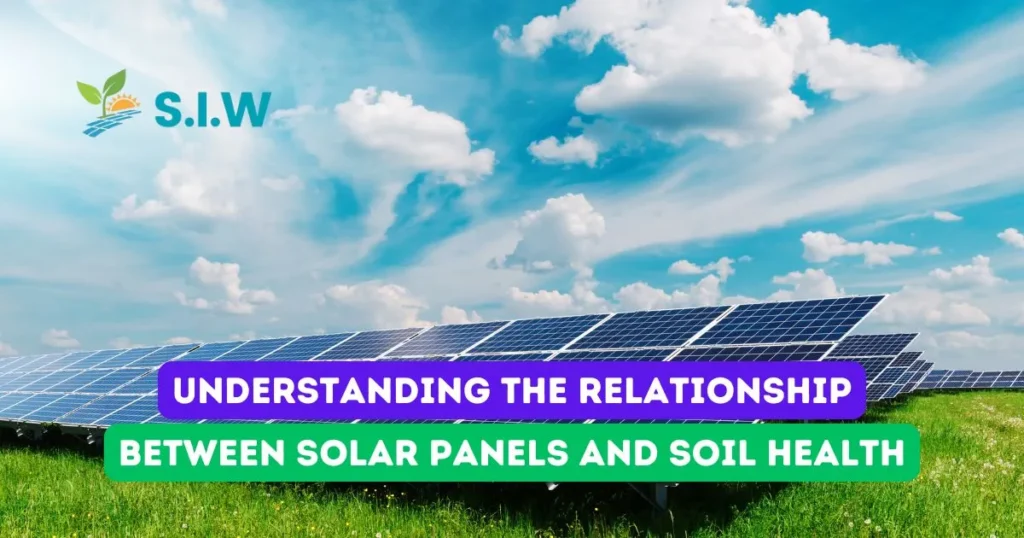The rapid expansion of solar energy systems has brought numerous environmental benefits, from reducing greenhouse gas emissions to decreasing reliance on fossil fuels. However, as solar panel installations proliferate, it is essential to examine their broader impacts, including their effects on soil health. This article delves into how solar panels interact with soil ecosystems, the potential benefits, and challenges associated with these interactions.
The Basics of Solar Panel Installation
How Solar Panels Work
Solar panels, or photovoltaic (PV) panels, convert sunlight into electricity through the photovoltaic effect. Each panel consists of multiple solar cells made from semiconductor materials, such as silicon. When sunlight strikes the cells, it generates an electric current that can be harnessed for power.
Installation and Site Preparation
The installation of solar panels typically involves setting up a framework or mounting system that holds the panels in place. This system can be either fixed or adjustable. Ground-mounted systems require significant site preparation, including grading and sometimes excavation. The area is cleared of vegetation, and in some cases, soil is compacted to provide a stable base for the installation.
Solar Panels and Soil Health: A Complex Relationship
Impact on Soil Structure
Soil Compaction
One of the primary concerns with ground-mounted solar panels is soil compaction. The process of preparing the land for installation often involves heavy machinery, which can compress the soil. Compacted soil reduces its permeability, making it harder for water to infiltrate. This can lead to increased runoff and erosion, potentially degrading the soil’s quality and affecting plant growth.
Soil Erosion
With vegetation removed during the installation process, the risk of soil erosion increases. Erosion can occur when there is no plant cover to hold the soil in place. Over time, this can lead to significant loss of topsoil, which is crucial for nutrient retention and overall soil health.
Effects on Soil Moisture
Altered Water Flow
The presence of solar panels and their supporting structures can alter the natural flow of water across the land. Panels can create shaded areas that affect local microclimates, potentially leading to changes in soil moisture levels. Additionally, the compacted soil beneath the panels can reduce the land’s ability to absorb rainwater, increasing surface runoff and potentially leading to waterlogging in certain areas.
Vegetation and Soil Moisture
To mitigate some of the negative effects, vegetation is sometimes maintained or introduced around solar panel installations. Plants can help to stabilize the soil, reduce runoff, and enhance soil moisture levels. The choice of vegetation is crucial; deep-rooted plants are particularly effective at preventing erosion and improving soil structure.
Potential Benefits of Solar Panels on Soil Health
Soil Conservation through Grazing
An innovative approach to integrating solar panels with soil conservation involves combining solar farms with grazing systems. Known as “agrivoltaics,” this method allows for the cultivation of crops or grazing of livestock beneath or around solar panels. The presence of vegetation and animal activity can help maintain soil health, prevent erosion, and promote nutrient cycling.
Improved Soil Quality through Reduced Tillage
In some cases, solar panel installations can indirectly benefit soil health by reducing the need for conventional tillage. Traditional farming practices often involve frequent plowing, which can lead to soil degradation. With solar panels occupying part of the land, there may be less pressure to till the soil, allowing natural processes to restore soil quality.
Microclimate Effects
The presence of solar panels can create localized microclimates that may benefit soil health. For instance, the shade provided by panels can reduce soil temperature extremes, which can be beneficial in areas with high temperatures. This shading effect can help maintain more stable soil moisture levels and support a diverse range of plant life.
Challenges and Considerations
Site Selection and Management
Careful site selection and management are essential to minimize the negative impacts of solar panel installations on soil health. Choosing sites with lower erosion potential and implementing proper drainage systems can help mitigate some of the adverse effects. Additionally, incorporating sustainable land management practices, such as erosion control measures and soil conservation strategies, can enhance the overall health of the soil.
Balancing Energy Production with Environmental Stewardship
As the demand for renewable energy grows, it is crucial to balance energy production with environmental stewardship. Solar panel installations should be planned and managed with consideration for their impacts on soil health. Engaging with soil scientists and environmental experts during the planning stages can help to identify potential issues and develop strategies to address them.
Research and Development
Ongoing research and development are vital for understanding and improving the relationship between solar panels and soil health. Innovations in solar panel technology, site management practices, and vegetation strategies can help to enhance the compatibility of solar energy systems with soil conservation goals.
Conclusion
The relationship between solar panels and soil health is multifaceted, with both potential benefits and challenges. While solar services can impact soil structure, moisture, and erosion, thoughtful planning and management can mitigate many of these effects. Integrating solar energy systems with sustainable land management practices, such as agrivoltaics, offers promising opportunities to support both renewable energy goals and soil health.
As we continue to expand our use of solar energy, it is essential to remain vigilant about the environmental impacts of these systems. By addressing the challenges and leveraging the benefits, we can work towards a future where solar energy contributes positively to both our energy needs and the health of our natural ecosystems.








